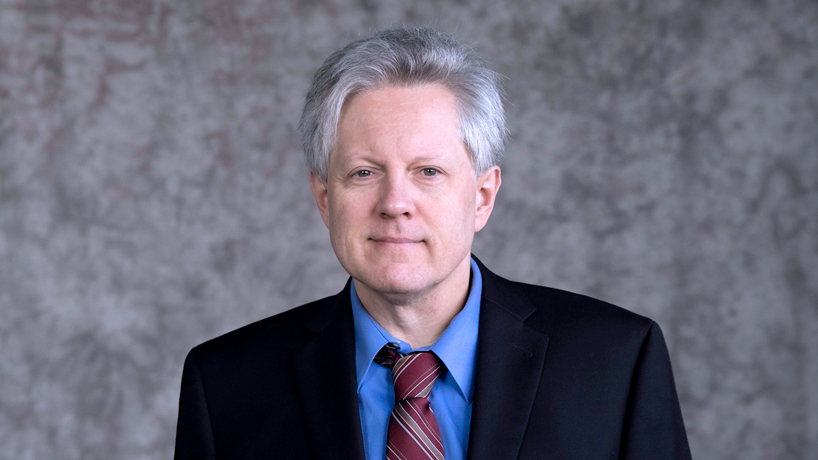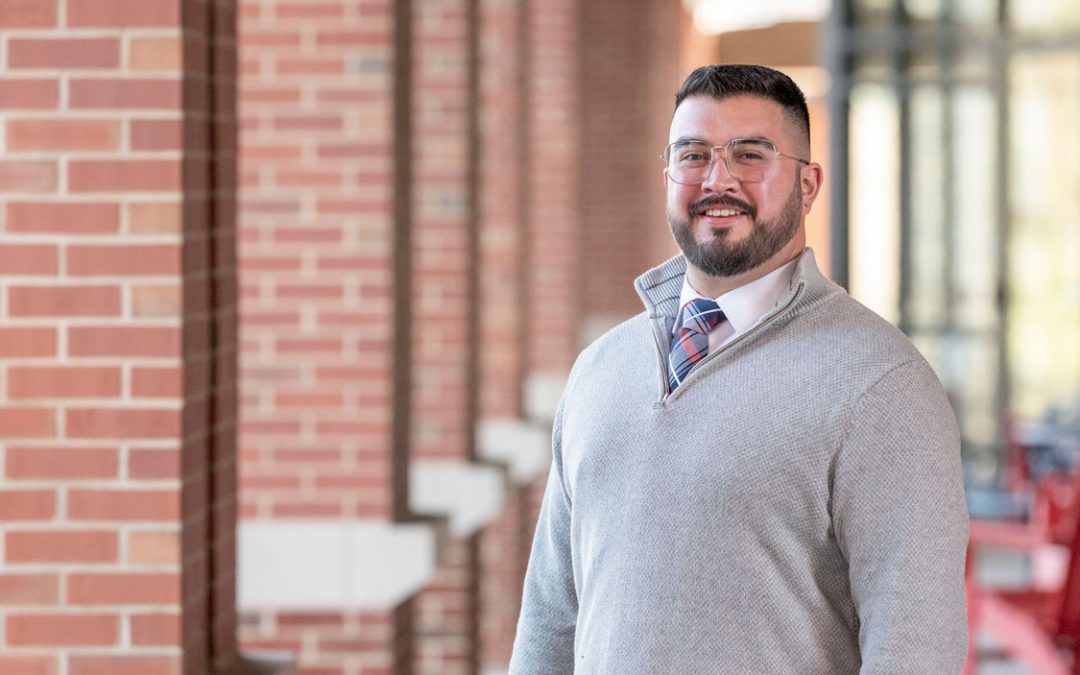
Keith Stine, professor in the Department of Chemistry and Biochemistry, was named the 47th recipient of the St. Louis Award from the St. Louis Section of the American Chemical Society at a banquet Friday night at Glen Echo Country Club. (Photo by August Jennewein)
The American Chemical Society’s St. Louis Section for nearly 50 years has used its St. Louis Award to recognize chemists of varied backgrounds who’ve made outstanding contributions to the field.
“It’s gone to faculty, it’s gone to major researchers in local industry, it’s gone to people working at government agencies in the St. Louis region,” said Keith Stine, a professor of chemistry and biochemistry at the University of Missouri–St. Louis.
Stine, unassuming by nature, would have been reluctant to insert himself among those ranks.
Fortunately, his UMSL colleagues did so on his behalf. Stine was chosen the 47th recipient of the prize first given in 1970 after being nominated by Professor Emeritus Lawrence Barton with support from Curators’ Professor Alexei Demchenko as well as Xuefei Huang, a professor and associate chair for research at Michigan State University.
Stine accepted a plaque and $1,500 honorarium at the St. Louis Award banquet Friday night at Glen Echo Country Club after a symposium that afternoon in Stadler Hall and a reception at the chancellor’s residence.
“Over the years I have nominated several other St. Louis area chemists for this award but I believe that the case to be made for Keith Stine is my strongest yet,” Barton wrote in the nomination letter he submitted last spring. “It describes a record of outstanding research, excellent and caring teaching, a superb record of service to education, to chemistry and to his employer, UMSL, and the most comprehensive record of service to the St. Louis Section of the ACS ever seen for a St. Louis Award nominee.”
Stine has been an active member of the St. Louis Section of the ACS for approaching three decades after joining the UMSL faculty in 1990. He spent five years as the secretary of the section from 2002 through 2006, served in the chair succession from 2007 until 2009 and is currently one of the directors.
In 2014, Stine was named an ACS Fellow as part of a nationwide program to recognize and honor members for outstanding achievements in and contributions to the science and the profession and exemplary service to the society.
“The St. Louis section is really a great organization,” Stine said. “We have quite a range of activities, including outreach to students in K-12 by bringing chemical demonstrations or chemical shows to elementary schools and high schools and to the Science Center. We have seminars for different areas of chemistry, including a lot for industrial chemists. We do career development work.
“We handle other awards that go to local area chemical technicians and teachers. We do a lot of events, like an annual picnic and a dinner around the holiday periods. We judge science fairs, locally and regionally. So it’s a very active organization.”
Stine’s connection to the St. Louis Section adds significance to winning the award. But it was still his research and teaching that led to his selection.
His research work most recently has focused on gold nanostructures. Specifically, he works with nanoporous gold, a material which can be used to develop biosensors – devices used for detecting the presence of proteins or certain biological molecules – or for carbohydrate synthesis. Both have applications in medicine and biotechnology.














